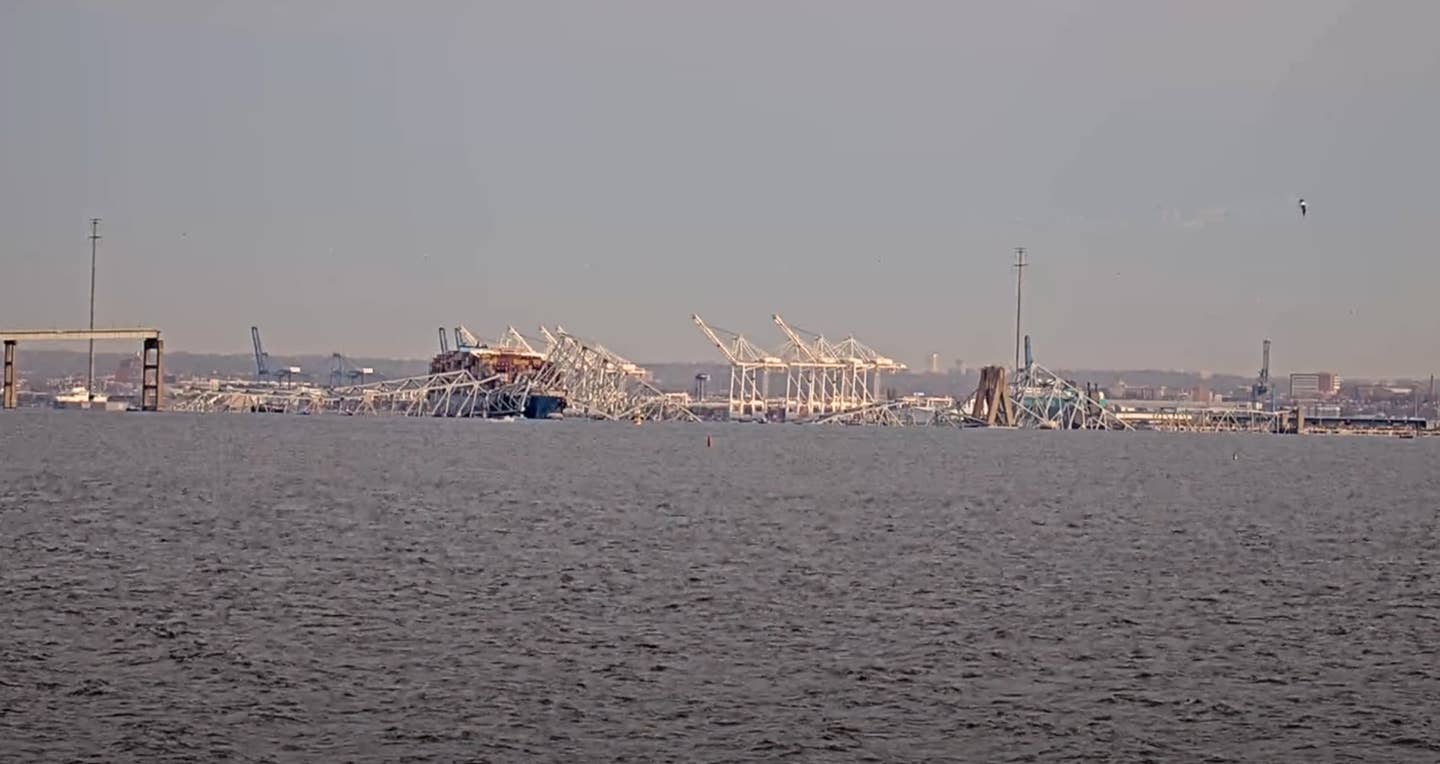FAA Creates No-Fly Zone Following Francis Scott Key Bridge Collapse
Aircraft and drones are restricted from flying within 5 nm of the site of the collision in Baltimore as rescue helicopters search for victims.

A ship crashed into Francis Scott Key Bridge in Baltimore on Tuesday morning, causing a collapse. [Courtesy: StreamTime Live/YouTube]
The FAA has issued a Notice to Air Missions (NOTAM) regarding flight restrictions in place around Francis Scott Key Bridge in Baltimore, which collapsed Tuesday morning after a container ship collided with it. The temporary flight restriction (TFR) covers the bridge and the surrounding Inner Harbor.
The NOTAM was issued to protect aircraft performing painstaking salvage and rescue missions in the area, which could be hindered by other aircraft. The U.S. Coast Guard said it deployed boats and a helicopter to the site. Several emergency helicopters are visible on Flightradar24. These aircraft are typically equipped with forward-looking infrared (FLIR) sensors and other cameras to search for victims.
No injuries or deaths have yet been reported by authorities, though first responders have described the situation as a “mass casualty multiagency incident.” Crews are reportedly searching for six people. The water where the bridge was struck is about 50 feet deep and 47 degrees Fahrenheit, complicating rescue efforts.
The FAA issued a specific warning to drone pilots in a post on X, formerly Twitter.
“The FAA has flight restrictions in place around the Francis Scott Key Bridge collapse,” the agency said. “Do not interfere with rescue operations. If you fly, emergency response operations cannot.”
Aircraft flying in the airspace around the bridge—even small drones—could compromise the safety of emergency aircraft. Entering the TFR would be akin to driving around a barricade intended to shield firefighters extinguishing a blaze.
The restriction limits pilots from flying within 5 nm and below 2,000 feet above the surface over the site of the incident. The TFR is under the Class B shelf, which has a floor of 1,500 feet—pilots avoid this airspace by flying below it. Essentially, the TFR prevents pilots from transitioning straight to Baltimore/Washington International Airport (KBWI) and flying up the Patapsco River.
Around 1:30 a.m. EDT Tuesday morning, a Singapore-flagged ship called the Dali collided with Francis Scott Key Bridge. The vessel was chartered by shipping giant Maersk but managed by the Synergy Group, which said no casualties occurred on board. The ship was carrying around 4,900 containers and traveling at about 9 mph (8 knots).
The Dali’s crew notified authorities of a power issue and sent a mayday before the collision, according to Maryland Governor Wes Moore.
The bridge crosses the Patapsco River and was part of Interstate 695, a major commuting route used by an estimated 35,000 people daily, said Paul Wiedefeld, Maryland Transportation Secretary. It and the Port of Baltimore comprise a key U.S. shipping hub.
Like this story? We think you'll also like the Future of FLYING newsletter sent every Thursday afternoon. Sign up now.

Subscribe to Our Newsletter
Get the latest FLYING stories delivered directly to your inbox






